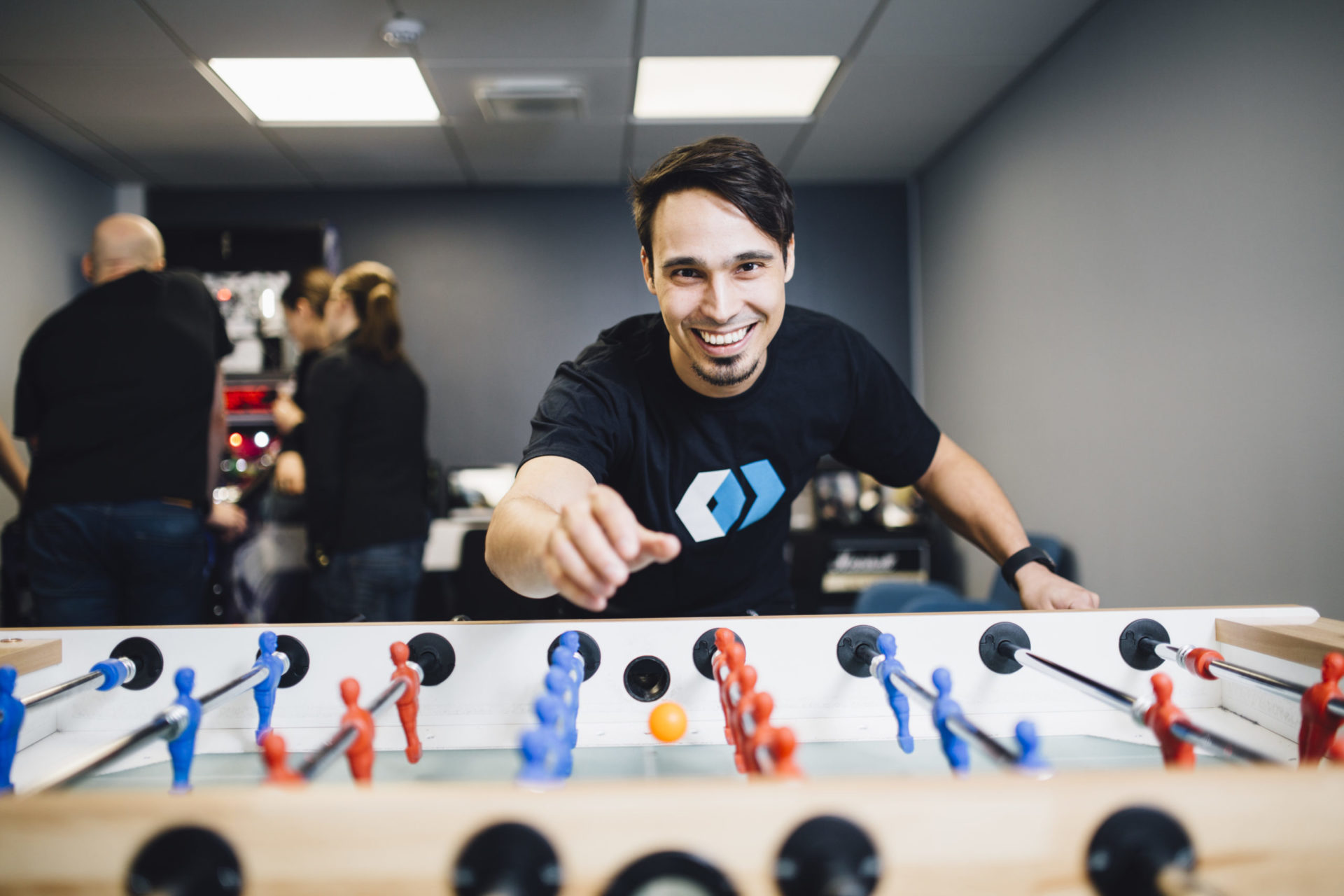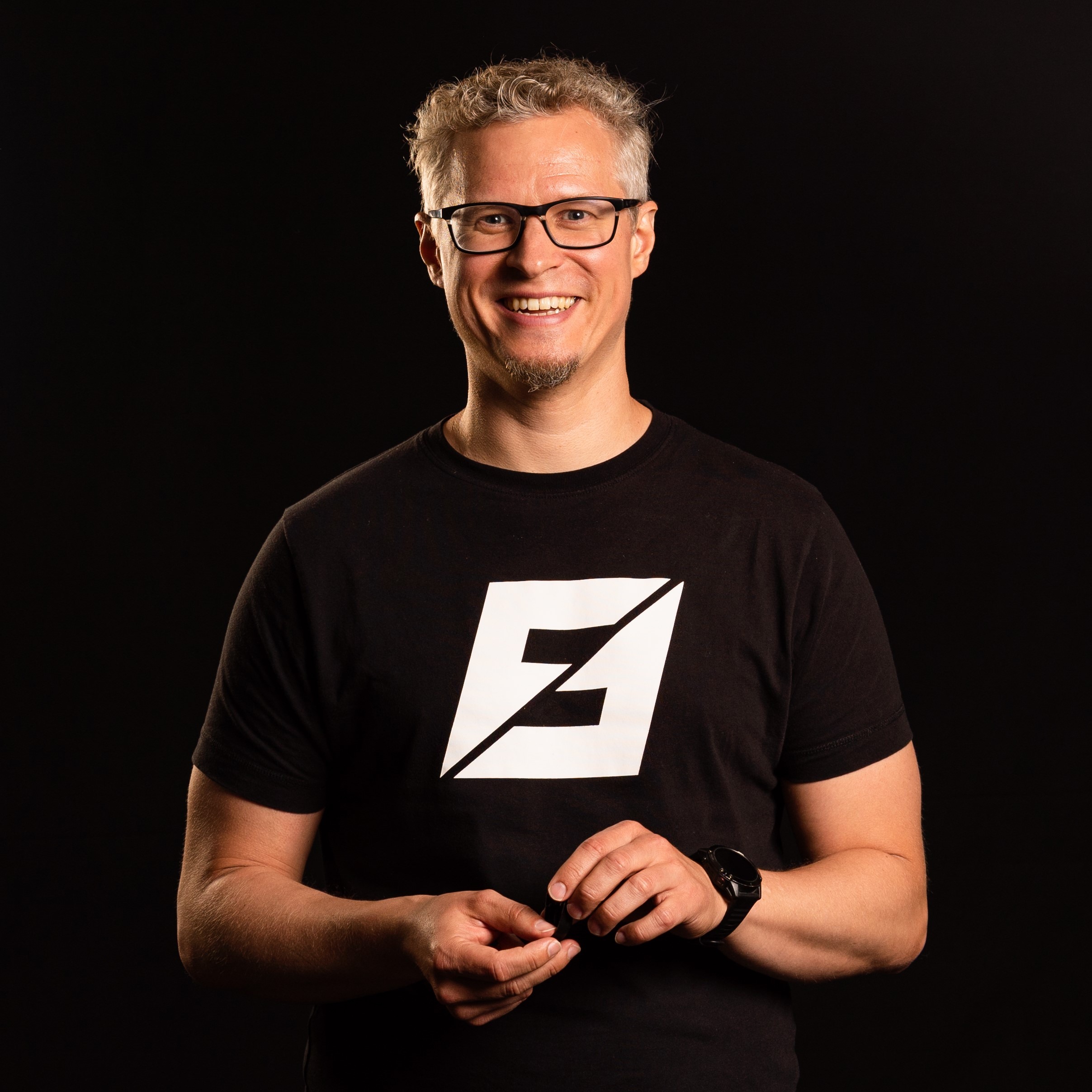- Blog
#Data&AI #Development #Digital service design #Learning #Zure
EU AI Act timer is ticking, are you prepared?
- 17/09/2024
Reading time 9 minutes

Kompozure’s objectives for 2018 focus on quality of life and the continuous improvement of expertise. These are practically
the same themes as in previous years, yet with growth it feels like their meaning is enhanced further.
There’s a temptation of stating ‘we’re doing alright’ and continuing by simply executing our business model. In the long
term, this would be a mistake. If that ‘execution’ (the ‘how’ of the company) ever becomes more important than the ‘culture’
(the ‘why’ of the company), itsignals the beginning of the end.
Our objectives fall under three categories: team happiness, employer brand and automatic learning.
Our 2018 objectives:
At the end, there’s a chapter on the
fiscal and other numerical results we are expecting, as well as my
contact information if you feel like chatting more.
Team success is born out of the contentment of a single member.
We want to trust our people. In practice, this trust is manifested through transparency, freedom to act, and lack of regulations.
However, as we grow, it is natural that these boundaries are sometimes pushed or breached. This friction helps the company
improve.
The reasons for the friction are many. A lot of it has to do with imperfect communication. If everybody does not share the
same vision, the same understanding of the company meaning, it becomes difficult for an expert to make judgement calls
when there are no clear rules. It is important for us that our ‘collective fiction’ (
*) is strong and internalized by everybody.
Sometimes the cause of friction is not lack of communication or vision, but the incompatibility between the company and a
person. Currently all IT companies talk about ‘culture fit’, whatever that in a given case means. Often it probably means
that in the recruitment meeting one should remember to act personably.
In any case, organizations have many ways to remove this ‘friction’. In many organizations, the preferred way is to create
more rules. That is kind of easy, since then the fault of non-conformance lies with the employee, and nobody needs to
think of the always difficult idea of changing existing processes.
We don’t believe in rules. Rather, it feels that if something is solved by creating rules, we’ve done something wrong.
We rather focus on culture, communication, team spirit, and on clarifying the company’s raison d’être, instead of creating
a jungle of regulations, monitoring and bureaucracy.
This culture-based work environment means that not everyone is comfortable working here, but that is totally okay. That is
perfect. If we are able to explain our vision well enough, we will get and retain the people with whom our ‘meaning’
resonates.
A common vision is not enough, it needs to be repeated. It needs to be visible in everything. We want our values to be a
natural part of our work and habits. The actualization of company values in the working methods is not automatic and
requires planning.
The end result here is that when the crew senses that the work matches the company values, the whole work feels more meaningful.
It is a common zeitgeist that the leadership does not understand the ‘common worker’. This separation must be actively guarded
against. Transparency on the big issues helps. The problem here is that sometimes the leadership might not be aware which
things are the big and meaningful ones.
The awareness requires information, both quantitative and qualitative. Quantitative is easy; it can be automated metrics
of ‘what is going on’. The qualitative side can be harder, since that is about the people and their emotions. It is a
good thing that getting that information is relatively easy as well – just spend time together. In addition to our monthly
gettogethers, we go abroad once a year; this year to Croatia at the end of August.
One of this year’s goals is to share responsibilities. This is something that organizations do semi-automatically along the
way, and what we’ve also often done during the previous years. Sometimes there’s a need for this at a larger scale, and
it seems we’re getting closer to this as well to remove possible growth blockers.
There are many things we are happy about with our current visibility, but in the mean time, we need to be able to make a
stronger push of our brand in the recruitmen market.
Marketing and recruitment require discipline, and so our strategy is to conscientously continue executing our own plan. The
results come at their own speed.
There is also a possibility this year we’ll start looking for someone to drive our marketing.
There are different kinds of recruitment partners. Some of them play dirty – first they call offering candidates, and next
they call the employees looking for candidates. Fortunately there are other kind of actors as well. Today’s overheated
recruitment market seems to require different kinds of approaches, and therefore we have multiple partners as well.
Only the individual herself can choose to learn. An organization can only offer opportunities. We’re seeking to create an
environment where learning cannot be avoided. Some people learn by discussing, some visually, and some by working things
out themselves. As long as we cater to all of these, we’re set.
Our methods:
We are looking to grow both our personnel and our turnover by at least 30%, while keeping the profitability at 15%.
Last year’s valueLast year’s growth %Target valueTarget growth %
| Turnover (1000€) | 2684 € | 46 % | 3623 € | 35 % |
| Profit after tax (1000€) | 336 € | 16 % | 543 € | 15 % |
| Personnel (end of year) | 29 (+9) | 45 % | 38 (+9) | 31 % |
Regarding personnel, we’re mostly looking for senior developers (/architects), as well as possibly one consultant to join
Karl Ots’ Advisory crew. And as mentioned earlier, this year we might start looking for someones to drive our marketing
as well as our testing practices.
Thank you for reading about our goals for this year. I’m very happy if this text impacted you in any way.
Don’t hesitate to contact me if there’s anything you’d wish to discuss about 🙂
Call or visit,
Sakari Nahi (+358 50 369 7782) [
Kompozure people and contact info]

Our newsletters contain stuff our crew is interested in: the articles we read, Azure news, Zure job opportunities, and so forth.
Please let us know what kind of content you are most interested about. Thank you!